When we updated our glossary entry on the NBA’s salary floor earlier this week, I noted that the Thunder are the only team currently under the floor for the 2021/22 season. Each NBA team is required to spend at least $101,173,000 on player salaries this season and 29 clubs have made financial commitments far exceeding that figure. Oklahoma City is the one exception.
Oddly enough, while the Thunder remain about $23MM below the salary floor, they have functioned since the 2021/22 league year began in August as an over-the-cap team.
The Thunder have used the mid-level exception (only available to over-the-cap clubs) to sign three different players. When they’ve taken on more salary in a trade than they’ve sent out – like when they acquired Derrick Favors from Utah – they’ve used trade exceptions to accommodate that incoming salary. And they haven’t used cap room to complete a single signing or trade, since they haven’t technically been “under the cap” at all so far in ’21/22.
On the surface, this seems like a paradox. How can a team be over the salary cap and under the salary floor at the same time? The Thunder’s unusual circumstances stem from the fact that a team’s salary in relation to the floor and the cap are determined using different methods.
Before we dig deeper into the explanation, let’s take a look at the player salaries currently on the Thunder’s books for 2021/22, with the help of data from Basketball Insiders and Spotrac:
| Player | Cap hit |
|---|---|
| Kemba Walker | $26,238,422 |
| Derrick Favors | $9,720,900 |
| Josh Giddey | $5,988,000 |
| Shai Gilgeous-Alexander | $5,495,532 |
| Gabriel Deck | $3,676,852 |
| Mike Muscala | $3,500,000 |
| Aleksej Pokusevski | $3,113,160 |
| Tre Mann | $2,901,240 |
| Darius Bazley | $2,513,040 |
| Ty Jerome | $2,412,840 |
| Theo Maledon | $2,000,000 |
| Jeremiah Robinson-Earl | $2,000,000 |
| Kenrich Williams | $2,000,000 |
| Luguentz Dort | $1,782,621 |
| Isaiah Roby | $1,782,621 |
| Kyle Singler | $999,200 |
| Vit Krejci | $925,258 |
| Patrick Patterson | $737,066 |
| Admiral Schofield | $300,000 |
| Mamadi Diakite | $100,000 |
| Total | $78,186,752 |
* Note: Players in italics have been waived and are no longer on the roster.
That total, just over $78MM, is the one we’re using when we say the Thunder are well below the $101MM+ salary floor. It’s also the figure that presents the clearest picture of how much Oklahoma City is actually spending on its roster.
However, when determining whether or not a team is over the cap, the NBA also accounts for a handful of other cap charges. The salary cap exceptions a team has available – such as traded player exceptions or the mid-level exception – are included in the tally. So are the cap holds for players who reached free agency with the club and have never signed with new teams or had their cap holds renounced.
[RELATED: Hoops Rumors Glossary: Cap Holds]
The Thunder aren’t financially on the hook for these exception amounts and cap holds — they’re essentially just placeholders. The reason they count toward team salary for cap purposes is so a club can’t circumvent NBA rules by using its cap room while simultaneously retaining Bird rights to all its free agents and hanging onto exceptions only available to over-the-cap teams.
Here are the non-salary cap holds currently on the Thunder’s books:
| Cap hold | Cap hit |
|---|---|
| Traded player exception | $12,800,000 |
| Traded player exception | $8,072,621 |
| Bi-annual exception (full) | $3,732,000 |
| Mid-level exception (partial) | $3,110,742 |
| Deonte Burton | $1,669,178 |
| Norris Cole | $1,669,178 |
| Nick Collison | $1,669,178 |
| Raymond Felton | $1,669,178 |
| Jawun Evans | $1,489,065 |
| Kevin Hervey | $1,489,065 |
| Total cap holds |
$37,370,205 |
| Total (salaries + cap holds) | $115,556,957 |
As that final row shows, after taking into account all the Thunder’s salaries, exceptions, and cap holds, their team salary exceeds the $112,414,000 cap by about $3MM.
The Thunder almost certainly won’t remain over the cap all season long. In order to maximize their financial flexibility and accommodate salary-dump trades before the February trade deadline, renouncing their various exceptions and cap holds makes the most sense. They could renounce all their exceptions and cap holds today if they wanted to, but there’s no rush to do so until it’s necessary for a roster move.
Even if the Thunder don’t actively try to get below the cap, it’ll likely happen naturally when their $12.8MM trade exception from last season’s Trevor Ariza deal expires. That’ll happen on February 3.
Still, for the time being, we can marvel at the rare situation the Thunder have created, with a team salary that’s simultaneously below the floor and over the cap. It’s not unusual for that to happen during the offseason before a team has filled out its roster, but it may be a long time before we see another club achieve the feat this far into a season.
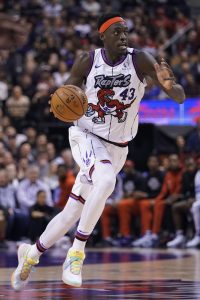 A player with at least three full seasons under his belt can be assigned to the G League, but it requires the player’s consent and a sign-off from the players’ union. Most of the time, these assignments are for injury rehab purposes, like when the Raptors sent
A player with at least three full seasons under his belt can be assigned to the G League, but it requires the player’s consent and a sign-off from the players’ union. Most of the time, these assignments are for injury rehab purposes, like when the Raptors sent 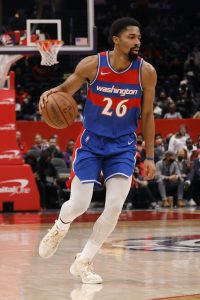
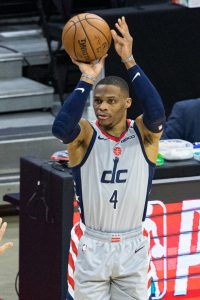 So when Westbrook approached the team with a request to be sent to the Lakers, it was something of a blessing in disguise.
So when Westbrook approached the team with a request to be sent to the Lakers, it was something of a blessing in disguise.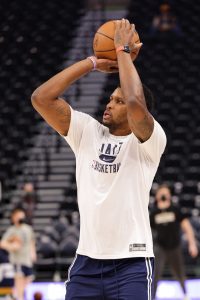
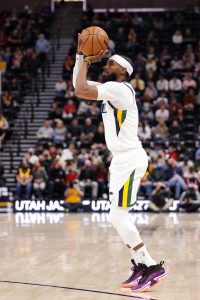 Although Utah didn’t have to worry about bringing back stars like
Although Utah didn’t have to worry about bringing back stars like